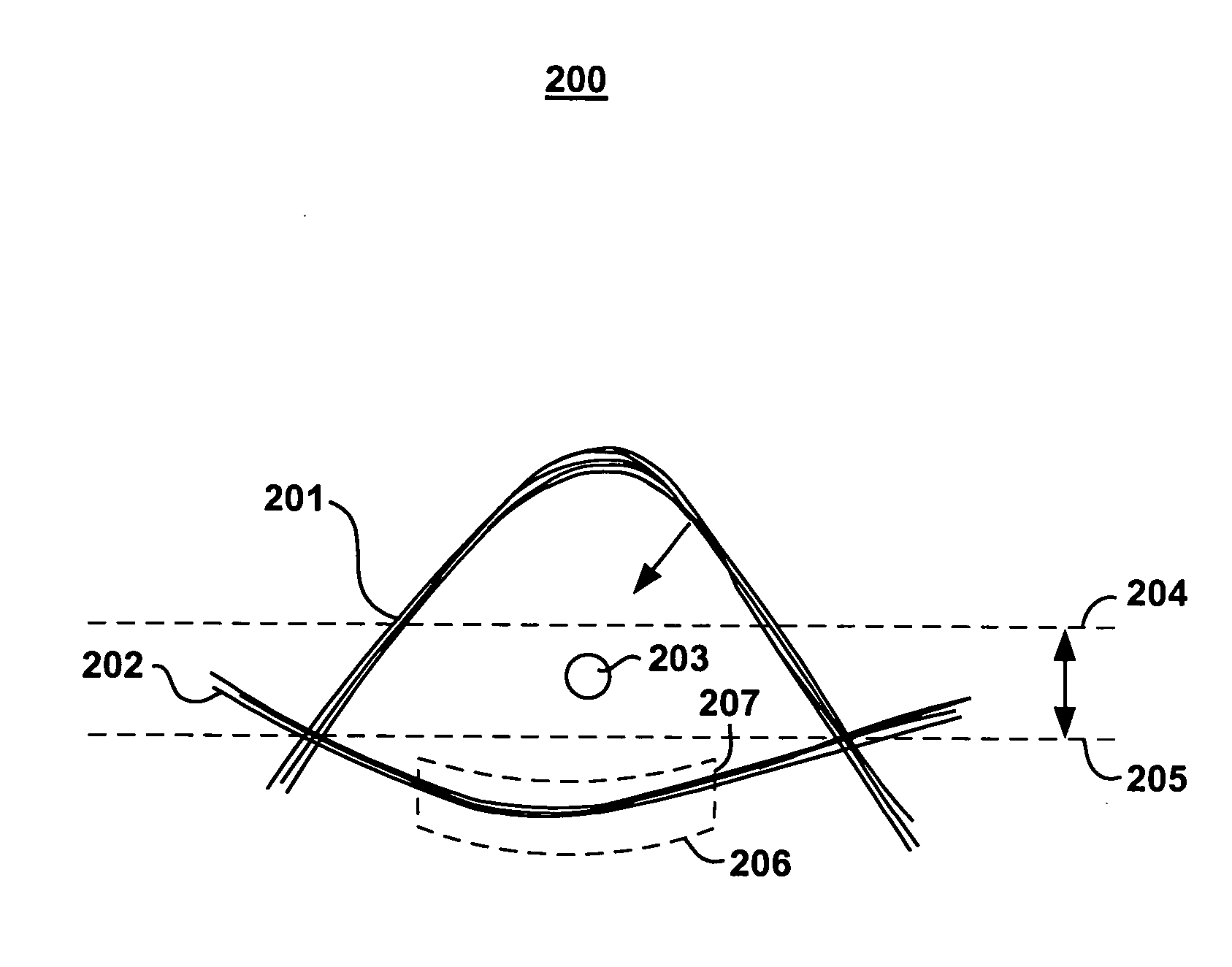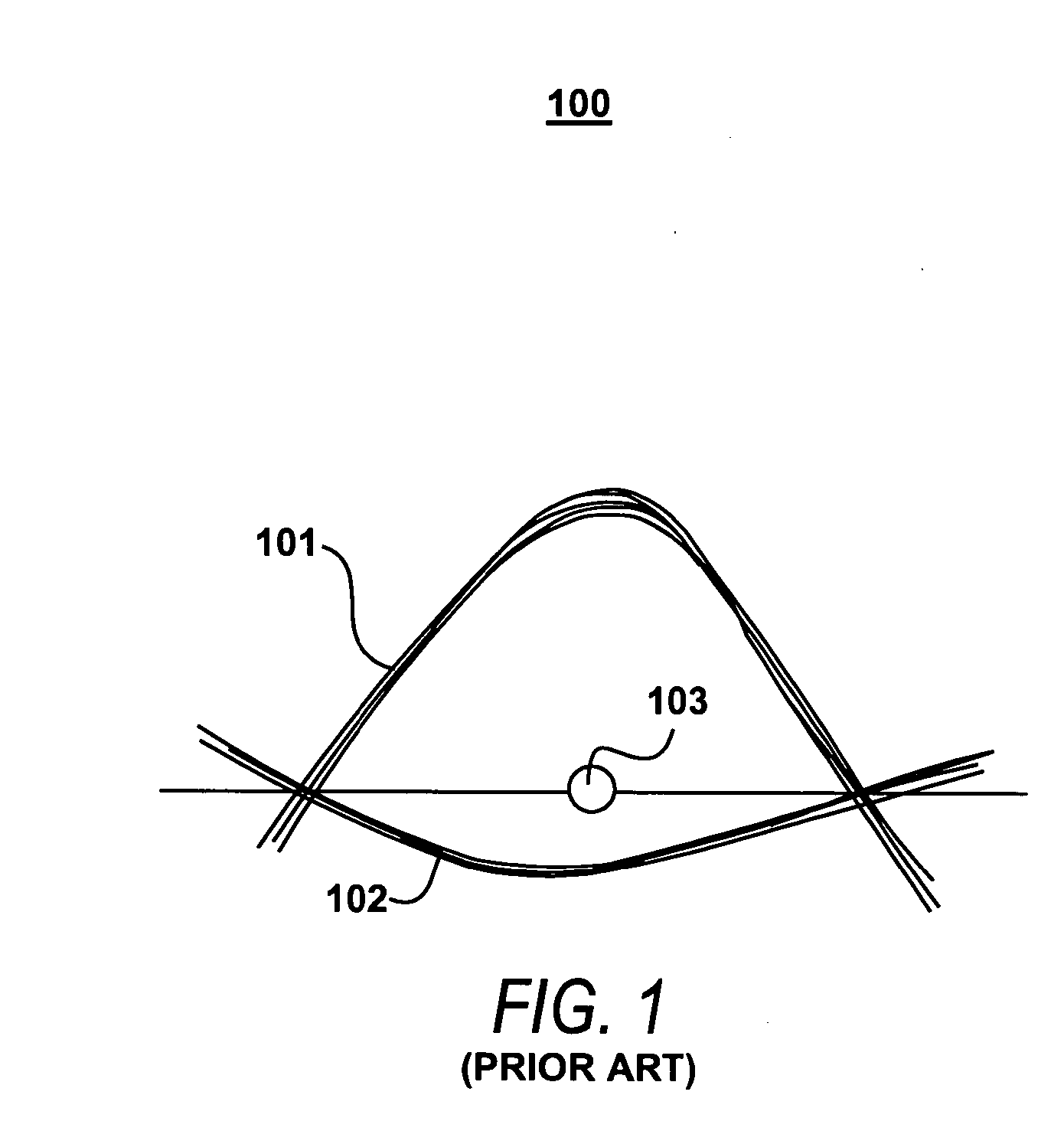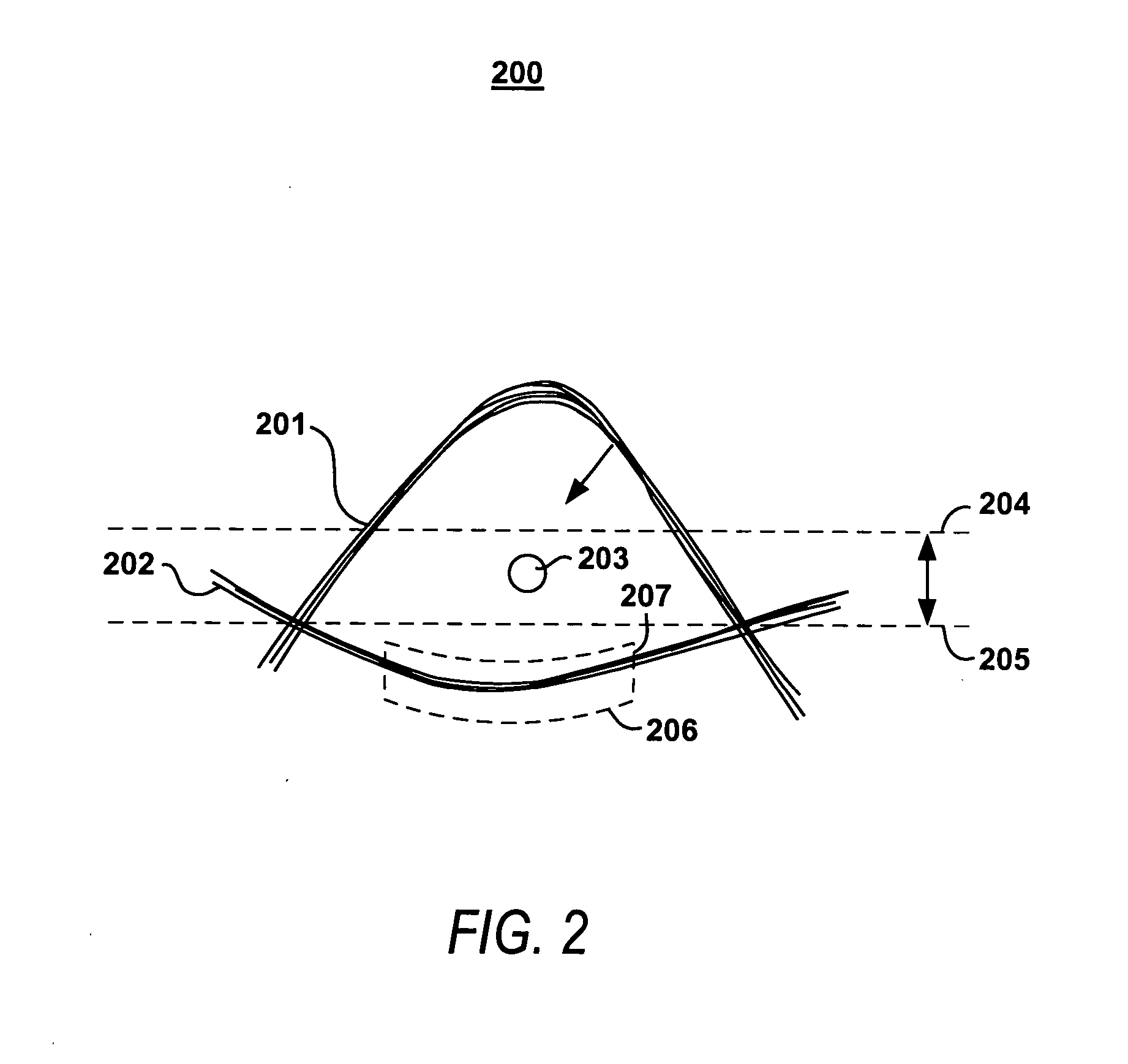Input stage threshold adjustment for high speed data communications
a high-speed data and threshold adjustment technology, applied in the field of improving can solve the problems of data being distorted during transmission between a transmitter and a receiver, affecting the timing characteristics of these positive and negative components, and affecting the reliability of data transmission. , to achieve the effect of increasing the reliability of data transmission
- Summary
- Abstract
- Description
- Claims
- Application Information
AI Technical Summary
Benefits of technology
Problems solved by technology
Method used
Image
Examples
Embodiment Construction
[0023] Turning first to FIG. 1, the principles of prior art signal-eye centering technique 100 is illustrated. Received positive signal component 101 and negative signal component 102 form a bit of the received signal. Signal-eye 103 is positioned vertically in-line with the zero-crossings of signal components 101 and 102. Prior art CDR circuitry (not shown) measures the average power of signal components 101 and 102 and compares them against the voltage of signal-eye 103 to determine if the received bit is a logical “1” or “0.” As stated, prior art signal-eye centering technique 100 does not correct for certain types of timing distortions. Moreover, the prior art does not provide for any correction or adjustment whatsoever.
[0024]FIG. 2 illustrates the principles of signal-eye correction technique 200 constructed in accordance with the principles of the present invention. Signal-eye 203 is provided to determine if the received signal bit, defined by positive signal component 201 an...
PUM
 Login to View More
Login to View More Abstract
Description
Claims
Application Information
 Login to View More
Login to View More - R&D
- Intellectual Property
- Life Sciences
- Materials
- Tech Scout
- Unparalleled Data Quality
- Higher Quality Content
- 60% Fewer Hallucinations
Browse by: Latest US Patents, China's latest patents, Technical Efficacy Thesaurus, Application Domain, Technology Topic, Popular Technical Reports.
© 2025 PatSnap. All rights reserved.Legal|Privacy policy|Modern Slavery Act Transparency Statement|Sitemap|About US| Contact US: help@patsnap.com



